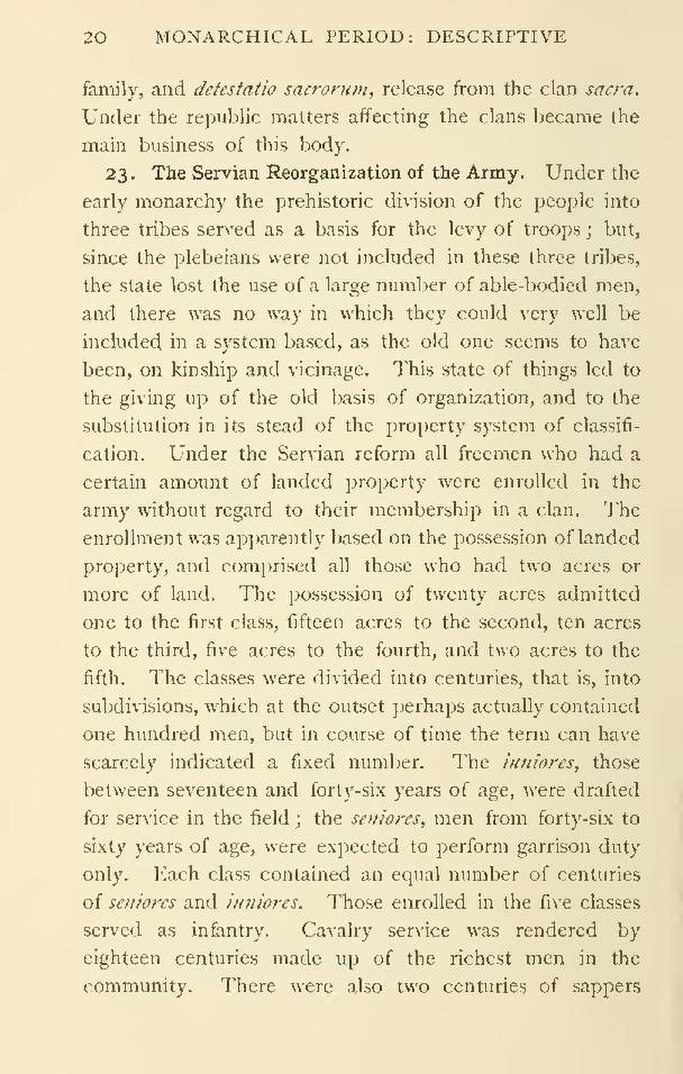family, and delestatio sacrorum, release from the clan sacra. Under the republic matters affecting the clans became the main business of this body.
23. The Servian Reorganization of the Army. Under the early monarchy the prehistoric division of the people into three tribes served as a basis for the levy of troops; but, since the plebeians were not included in these three tribes, the state lost the use of a large number of able-bodied men, and there was no way in which they could very well be included in a system based, as the old one seems to have been, on kinship and vicinage. This state of things led to the giving up of the old basis of organization, and to the substitution in its stead of the property system of classification. Under the Servian reform all freemen who had a certain amount of landed property were enrolled in the army without regard to their membership in a clan. The enrollment was apparently based on the possession of landed property, and comprised all those who had two acres or more of land. The possession of twenty acres admitted one to the first class, fifteen acres to the second, ten acres to the third, five acres to the fourth, and two acres to the fifth. The classes were divided into centuries, that is, into subdivisions, which at the outset perhaps actually contained one hundred men, but in course of time the term can have scarcely indicated a fixed number. The iuniores, those between seventeen and forty-six years of age, were drafted for service in the field; the seniores, men from forty-six to sixty years of age, were expected to perform garrison duty onlly. Each class contained an equal number of centuries of seniores and iuniores. Those enrolled in the five classes served as infantry. Cavalry service was rendered by eighteen centuries made up of the richest men in the community. There were also two centuries of sappers
